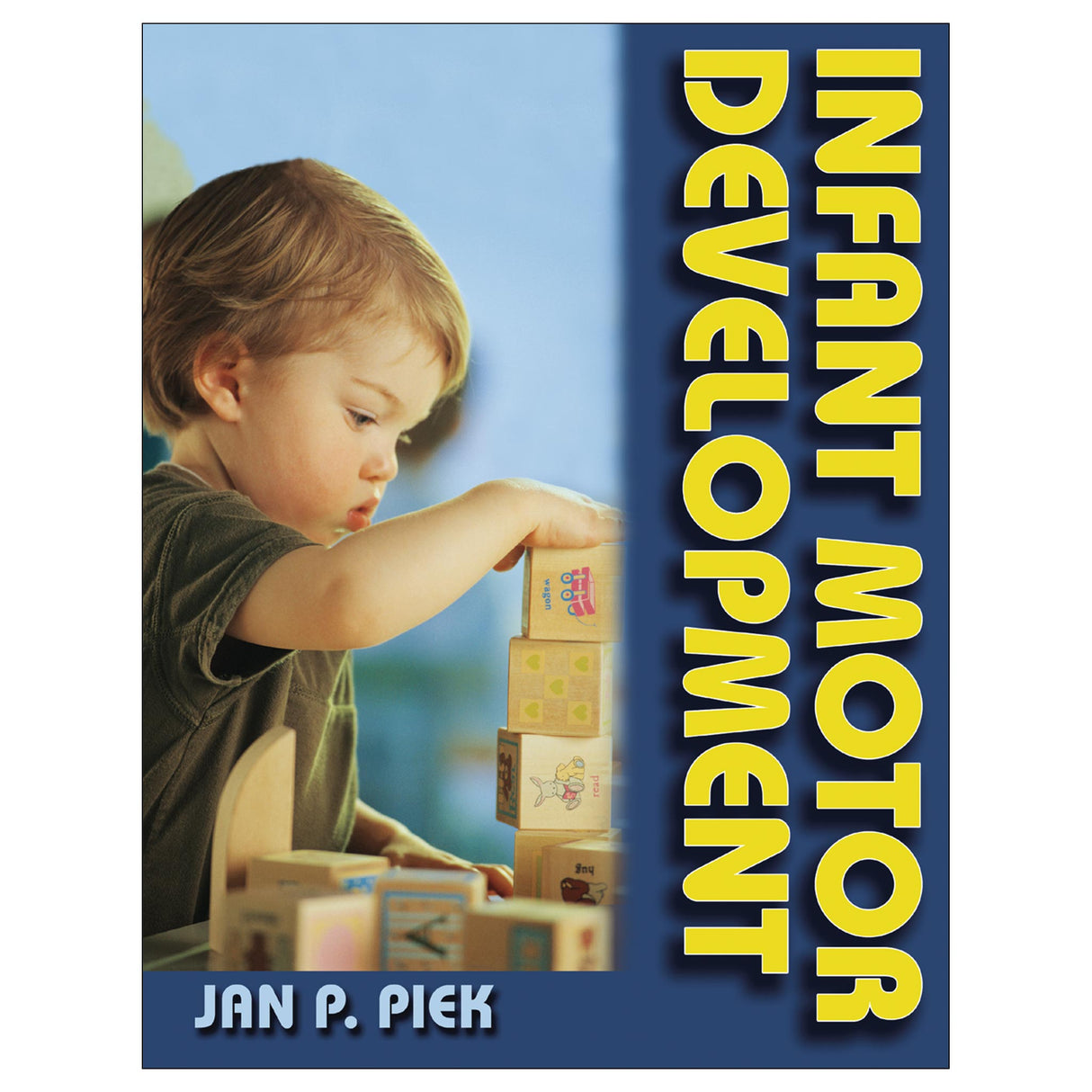Infant Motor Development
Author: Jan Piek
$59.00 CAD
Infant Motor Development is the first text to concentrate on motor development during infancy—the stage in which the greatest qualitative changes in the life span occur. It is an excellent introduction to the most relevant and common issues researchers, clinicians, and parents face.
This groundbreaking text combines theory with application to provide the most current account of infant motor ability and disability—including the latest prenatal research—all in one comprehensive resource. Infant Motor Development presents criteria for selecting the most appropriate assessment tool and intervention strategies to improve the motor functioning of infants with particular problems. The result is an essential textbook for graduate students and an up-to-the-minute reference for health professionals and researchers.
Infant Motor Development is organized into four parts covering theory, research, assessment, and intervention. It integrates information from a variety of disciplines to encourage a broad understanding of infant motor development. Topics include the development of voluntary movements such as posture, stability, balance, and orientation; manual control of reaching and grasping; locomotor control of creeping and walking; the unique difficulties faced by premature infants; and an examination of two disabilities with devastating consequences to motor control: cerebral palsy and Down syndrome.
Infant Motor Development contains many helpful features:
-Sidebars highlighting the relationship between research and therapeutic practice
-Chapter objectives and summaries that clarify the main ideas and simplify the review process
-Key points that highlight important concepts throughout the text
-Glossary of terms that clearly defines the concepts used in infant motor development
With Infant Motor Development, students will understand the subject area from a variety of disciplines and perspectives, researchers will discover the most current theory and findings, and clinicians will learn to apply theory and research in their work with infants.
Audience
A reference for specialists in motor development, motor behavior, early childhood, and rehabilitation; a textbook for undergraduate and graduate motor development courses.
Preface
Acknowledgments
Credits
Part I: Foundations of Infant Motor Development
Chapter 1. Early Movement Capabilities
-Prenatal Period
-Sensory Capabilities in the Newborn
-Motor Development in Infancy
-Summary
Chapter 2. Theoretical Approaches to Motor Development
-Historical Overview of Theoretical Approaches
-Maturational Perspective
-Cognitive Approaches
-Prescriptive Approaches
-Ecological/Natural Systems Approach
-Summary
Chapter 3. Motor Control and the Brain: Motor Development and Neural Plasticity
-Neurophysiology of Movement
-Brain Development and Neural Plasticity
-Function of Central Nervous System in Motor Development
-Summary
Part II: The Development of Voluntary Movement Control
Chapter 4. Postural Control: Development of Stability, Balance, and Orientation
-Definition and Description of Postural Control
-Developmental Transitions in Balance Control
-Influences on the Development of Postural Control
-Summary
Chapter 5. Manual Control: Development of Reaching and Definitions and Descriptions of Prehension
-Reaching in the First Few Months
-Development of Successful Reaching
-Development of Grasping
-Bimanual Reaching and Grasping
-Tool Use
-Manual Asymmetries in Infancy
-Summary
Chapter 6. Locomotion: Development of Creeping and Walking
-Locomotor Milestones
-Prescriptive Views of Locomotor Development
-Locomotor Development From a Perspective of Dynamic Systems
-Leg Asymmetries in Infancy
-Summary
Part III: Assessment of Motor Ability In Infants
Chapter 7. Appropriate Choice of Motor Assessment Test
-Importance of Motor Assessment
-Criterion- and Norm-Referenced Assessments
-Components of Good Assessment Tools
-Special Issues of Infant Testing
-Summary
Chapter 8. Neurobehavioral Motor Assessment and Other Tests
-Apgar Assessment
-Neonatal Neurological Examination
-Neonatal Neurobehavioral Assessment
-Qualitative Assessment of General Movements in Infants
-Evaluation of Neonatal Examinations
-Summary
Chapter 9. Diagnostic Motor Assessment and Screening Tests
-Norm-Referenced Developmental Diagnostic Tests
-Usefulness of Norm-Referenced Tests
-Criterion-Referenced Developmental Diagnostic Tests
-Screening Instruments
-Recent Technological Advances in Diagnostic Assessment
-Summary
Part IV: Motor Control and Developmental Disorders
Chapter 10. Motor Development in Preterm Infants
-Premature Birth
-Causes of Premature Birth and Low Birth Weight
-Immediate Problems
-Long-Term Outcome
-Motor Development in the First Few Months
-Intervention Approaches for the High-Risk Preterm Infant
-Summary
Chapter 11. Cerebral Palsy
-Definition of Cerebral Palsy
-Occurrence of Cerebral Palsy
-Categories of Cerebral Palsy
-Etiology of Cerebral Palsy
-Cerebral Palsy Registers
-Identifying Cerebral Palsy in the Early Years
-Orthopedic Approaches to Intervention
-Early Intervention Approaches
-Summary
Chapter 12. Down Syndrome
-Definition of Down Syndrome
-Characteristics of Individuals With Down Syndrome
-Motor Development in Down Syndrome
-Intervention Approaches
-Summary
Glossary
References
Subject Index
About the Author





